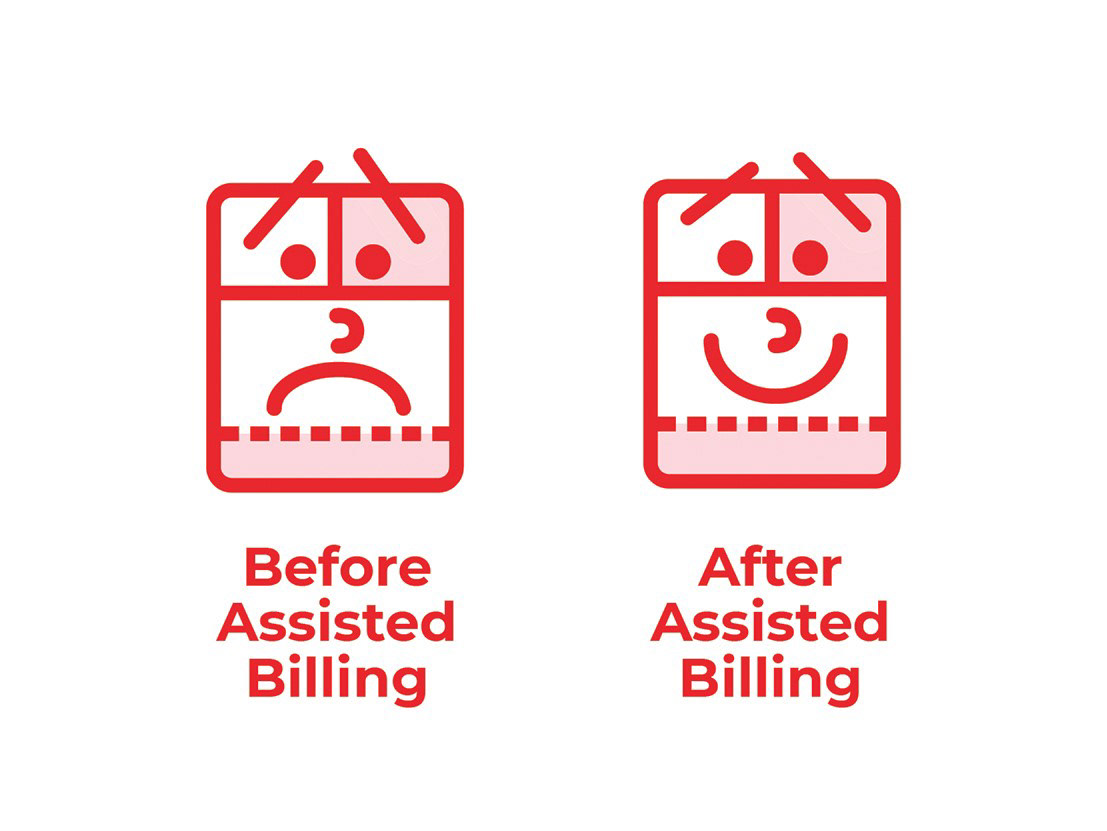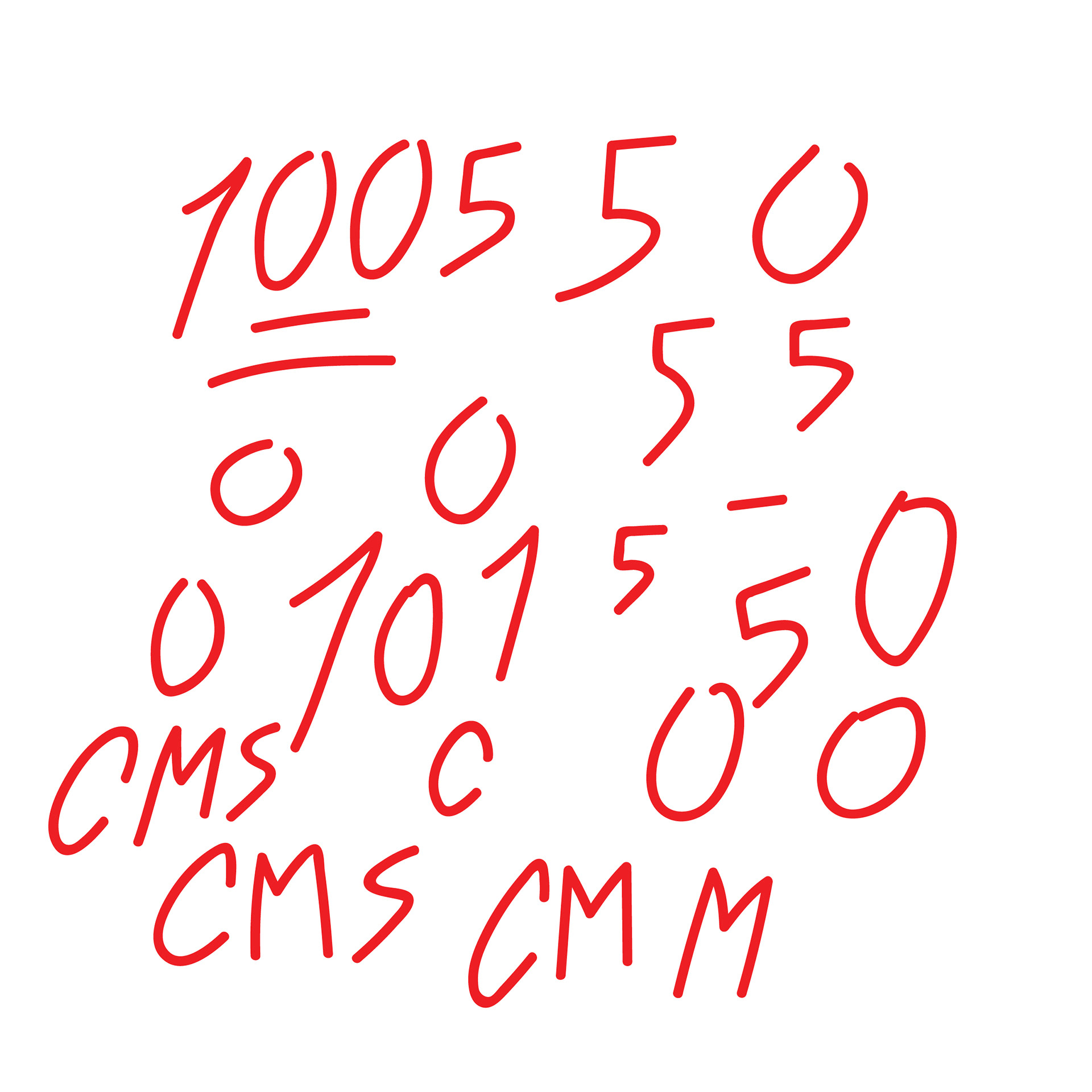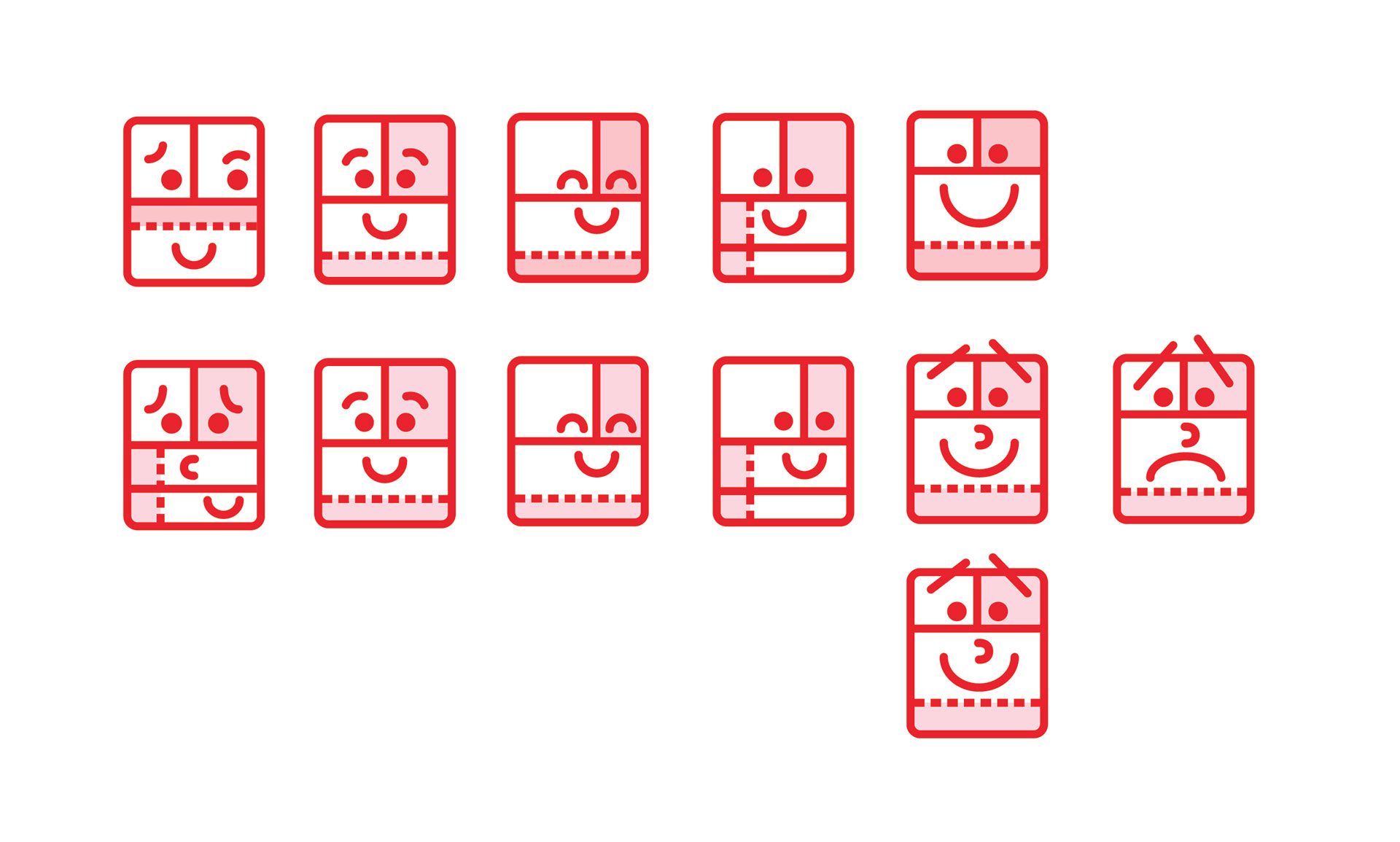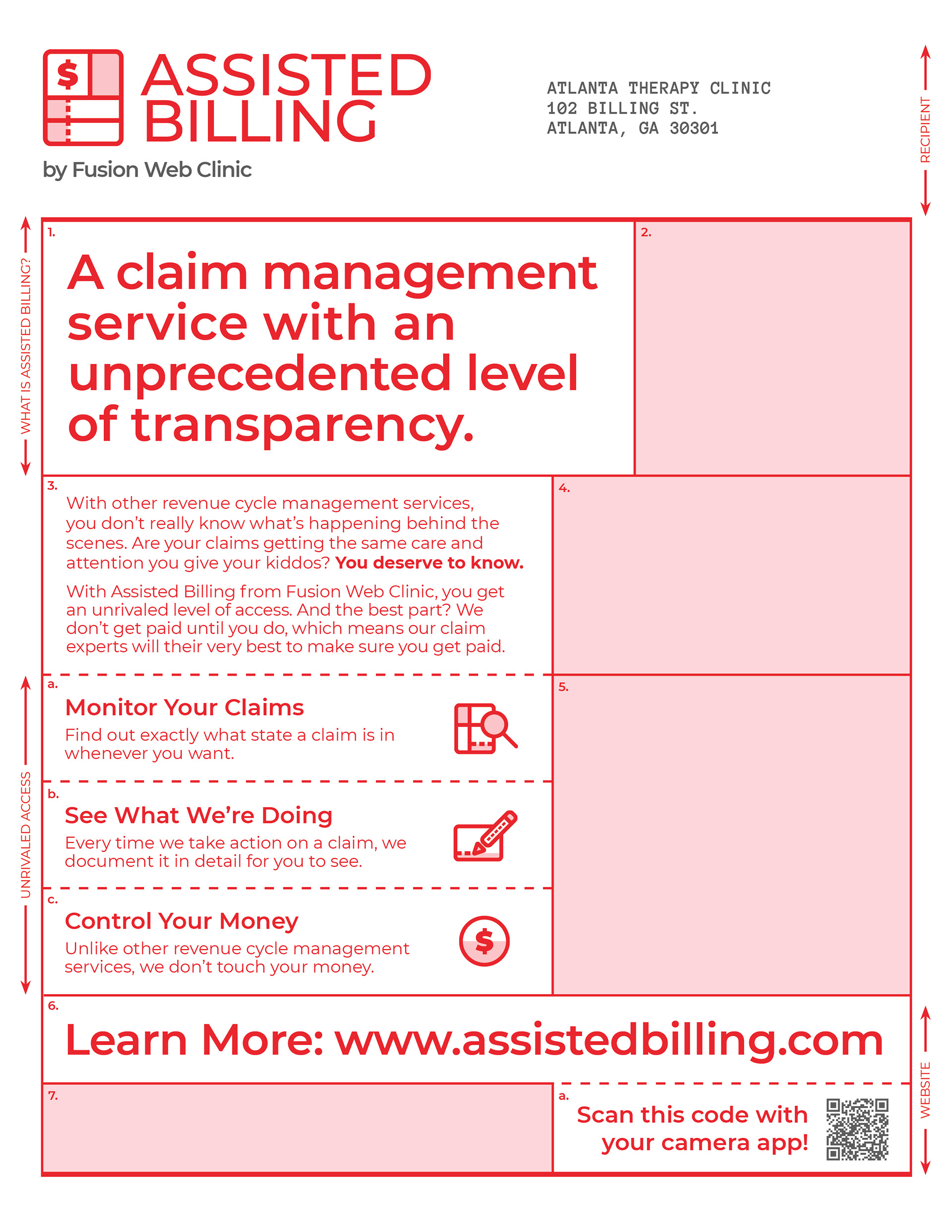Fusion Web Clinic, a therapy software company, was launching a revenue cycle management service (RCM) at the beginning of 2019. Within the industry, most RCM services handle the entirety of a clinic's billing process. Fusion's service only handled one component. We had never launched a distinctly different service like this before, so there were challenges associated with it.
I was responsible for marketing efforts and lead generation. Over the course of this project, I played numerous roles from art director to copywriter. Through a small direct mail campaign, I generated 24 qualified leads which led to 4 new customers within the first month.
Objectives
1. Differentiate our new service from our core software.
2. Create an engaging written and visual narrative for the service to attract customers.
3. Set ourselves apart from competitors.
4. Accurately communicate that our service was not a full RCM service, but rather a single component of the cycle.
2. Create an engaging written and visual narrative for the service to attract customers.
3. Set ourselves apart from competitors.
4. Accurately communicate that our service was not a full RCM service, but rather a single component of the cycle.
Messaging
Role: Project Lead, Consultation, Copywriting
I started by interviewing team members who were working on the project and researching the industry. I then wrote descriptions of what the product was and why people might be interested in it. Next, I created a list of the real-world benefits it could bring to customers. Finally, I created elevator pitches.
At this point, I was ready to tackle our service's name. Our team was initially going to call the new service by the generic industry term "Revenue Cycle Management". I steered us away from this for two reasons:
1. Calling it Revenue Cycle Management would have been confusing and too clinical. The service didn't actually manage the entirety of the revenue cycle (only one slice of it), and many practitioners weren't familiar with the "revenue cycle" terminology. Calling it this would have been confusing and could have led people to think the service was broader in scope than it really was.
2. There was a lot of potential to stand out from the crowd and be relate-able. Many of our competitors were using generic or confusing terms to talk about their RCM services. Additionally, none of them had leveraged effective branding to engage their audiences. This was a key opportunity for us to be different.
After some brainstorming and discussion, our team settled on the name Assisted Billing. This name more accurately reflected the type of service we were providing, and it used terminology that our audience would be familiar with. It also had room to grow because there were plans to expand the service down the road.
At this point, I was ready to tackle our service's name. Our team was initially going to call the new service by the generic industry term "Revenue Cycle Management". I steered us away from this for two reasons:
1. Calling it Revenue Cycle Management would have been confusing and too clinical. The service didn't actually manage the entirety of the revenue cycle (only one slice of it), and many practitioners weren't familiar with the "revenue cycle" terminology. Calling it this would have been confusing and could have led people to think the service was broader in scope than it really was.
2. There was a lot of potential to stand out from the crowd and be relate-able. Many of our competitors were using generic or confusing terms to talk about their RCM services. Additionally, none of them had leveraged effective branding to engage their audiences. This was a key opportunity for us to be different.
After some brainstorming and discussion, our team settled on the name Assisted Billing. This name more accurately reflected the type of service we were providing, and it used terminology that our audience would be familiar with. It also had room to grow because there were plans to expand the service down the road.
Branding
Role: Strategy, Art Direction, Design
As I mentioned earlier, I noticed that none of our competitors were bothering to use a visual identity to promote their RCM services. To get ours to stand out, I produced a cohesive visual narrative and branding kit to help promote the service.
For the service's logo, I wanted to give people a visual anchor to latch onto that would help them understand the product.
The visual identity needed to connect directly to what our customers were doing in the real-world. After a lot of research and brainstorming, I settled on a medical claim form (the CMS-1500) as a visual anchor because it was iconic and ubiquitous. The people we wanted to reach handled these forms constantly.
For the service's logo, I wanted to give people a visual anchor to latch onto that would help them understand the product.
The visual identity needed to connect directly to what our customers were doing in the real-world. After a lot of research and brainstorming, I settled on a medical claim form (the CMS-1500) as a visual anchor because it was iconic and ubiquitous. The people we wanted to reach handled these forms constantly.
The CMS-1500 Claim Form
To create the visual identity based off of the anchor, I started by deconstructing the claim form. I cut it up into pieces and closely examined all of the complicated fields, line patterns, and structures.
From there, I recreated the form digitally and began manipulating the form's visuals.
Iterations of the Visual Identity
In the end, I created a simplified icon that was inspired by the visual essence of the claim form.
I also designed a set of custom icons to help represent the various talking points and components of the revenue cycle.
I wanted to humanize our service and make it more relatable, so I created some custom emojis.

An Animated GIF Showing the Logo Development



Direct Mail Campaign
Role: Project Lead, Art Direction, Design, Packing
After limited success with digital marketing channels, I decided to give direct mail a chance. The CMS-1500 claim form presented itself to me as a prime candidate for being remixed into a direct mail piece.
During my interviews with team members, I stumbled upon a major competitive advantage our service possessed: transparency. Because of the way our software and claims service worked, we would be able to provide a level of transparency that other services could not.
I wondered if I could use the idea of transparency as an additional visual metaphor by sending the direct mail piece in a clear mailer.
I vetoed this idea however because I thought that seeing a clear mailer would be too gimicky. It might have had the effect of standing out and being different, but I didn't want to take the risk of it being thrown away. I wanted the recipient to actually have to open the envelope to see what was inside.
I wondered if I could use the idea of transparency as an additional visual metaphor by sending the direct mail piece in a clear mailer.
I vetoed this idea however because I thought that seeing a clear mailer would be too gimicky. It might have had the effect of standing out and being different, but I didn't want to take the risk of it being thrown away. I wanted the recipient to actually have to open the envelope to see what was inside.
Instead, I had the idea of making the collateral itself be transparent. At last, I had my final concept: a transparent claim form as a direct mail piece.
I ordered several different paper types to test to see which one would work best. I discovered that printing on transparency filters wouldn't work because they were too clear and you couldn't actually read what you were holding. Vellum turned out to be the best option.
I ordered several different paper types to test to see which one would work best. I discovered that printing on transparency filters wouldn't work because they were too clear and you couldn't actually read what you were holding. Vellum turned out to be the best option.
The Final Direct Mail Piece

As a small gift to the recipient, I created a sticker sheet using the emojis I designed. Our audience loved them!



Results
Budget: $2,000 - $3,000
Amount Spent: $2,000
320 Mailers Sent (Leads)
24 Landing Page Submissions (MQL)
6 Conversions ($6,000/month in MRR)
16% conversion rate (MQL to Customer)
Amount Spent: $2,000
320 Mailers Sent (Leads)
24 Landing Page Submissions (MQL)
6 Conversions ($6,000/month in MRR)
16% conversion rate (MQL to Customer)
If each customer sticks with the service for only one year, my small campaign will have generated at least $72,000 in gross profit from this $2,000 campaign.
Landing Page
Role: Layout, CSS Styling, Copywriting
For the direct mail campaign, I designed a custom landing page that the leads could visit to learn more about the service. The page reflected the same visual style of the mailer they received.
Content Marketing
Role: Coordination, Idea Generation, Distribution
To further promote the service, I hired several writers to produce blog content around relevant topics. One of the writers I chose was a talented content writer based in Greenville, SC. The other was an influencer in our industry who had direct experience with the subject.